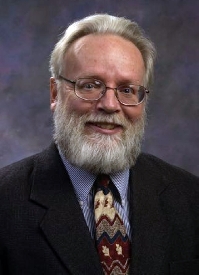University News
Rural Illinois Perspectives: Attracting and Retaining Young People as an Economic Development Strategy
January 11, 2010
By Timothy Collins, IIRA Assistant Director
MACOMB, IL -- Much attention has been focused on the movement of people to the "stimulating and creative environments" found in larger, urban centers.
According to a recent Rural Research Report from the Illinois Institute for Rural Affairs, community development practitioners in small towns and rural areas may be inclined to try to duplicate such urban-style amenities as pedestrian malls and a thriving night life. The report's author, Will Andresen, University of Wisconsin Extension associate professor, notes that this approach may work in small towns and rural areas with assets such as lakefronts and mountains, but a different approach may be more productive in most small towns and rural areas.
For example, residents of the Gogebic Range of Iron County in Wisconsin and Gogebic County in Michigan decided a new community development strategy was needed to reverse their decades-long population loss and to create the kind of community that would be attractive to young people as a place to live and work.
After conducting a community survey to understand the area's assets for attracting young people, a public forum presented the survey results. The survey helped the community appreciate its strengths, including its "core community" assets and its unique "nature-based outdoor recreation niche."
The findings also identified four major asset-based opportunities to address the community's declining population. These opportunities gave rise to four work groups, which formed the Next Generation Initiative to attract and retain young people. Two groups focused on attracting young people from outside the Gogebic Range and two focused on retaining young people who were already living on the range.
Whether this initiative will ultimately reverse the decades-long population decline of the area is difficult to determine. However, several indicators point to positive short- and mid-term outcomes. For example, young professionals from the Gogebic Range conducted a "First Impressions" exchange with young professionals from a neighboring community to help the respective communities further understand how they are perceived by young people. Participants also reported new opportunities for social networking and the creation of communitywide collaborations and partnerships across the county and state lines.
The initiative created four collaborative endeavors, including an effort by four chambers of commerce to promote the region as a place to live, a vision created by five communities for a regional trail system, and two student retention partnerships between the local extension office and two educational institutions.
Understanding how the community is perceived by its young people will help ensure that the Gogebic Range Next Generation Initiative's asset-based community development approach will effectively attract and retain young people. The research-based initiative should contribute to reversing the decades-long population loss.
You can obtain a copy of the report by contacting IIRA at the phone number below or from our website at www.iira.org/pubs/publications/IIRA_RRR_707.pdf.
Western Illinois University is an Affirmative Action, Equal Opportunity institution. For more information about the Illinois Institute for Rural Affairs, see our website www.IIRA.org. If you care to comment about this column, please contact Timothy Collins, 800-526-9943 or T-Collins@wiu.edu.
Posted By: University Communications (U-Communications@wiu.edu)
Office of University Communications & Marketing


Connect with us: